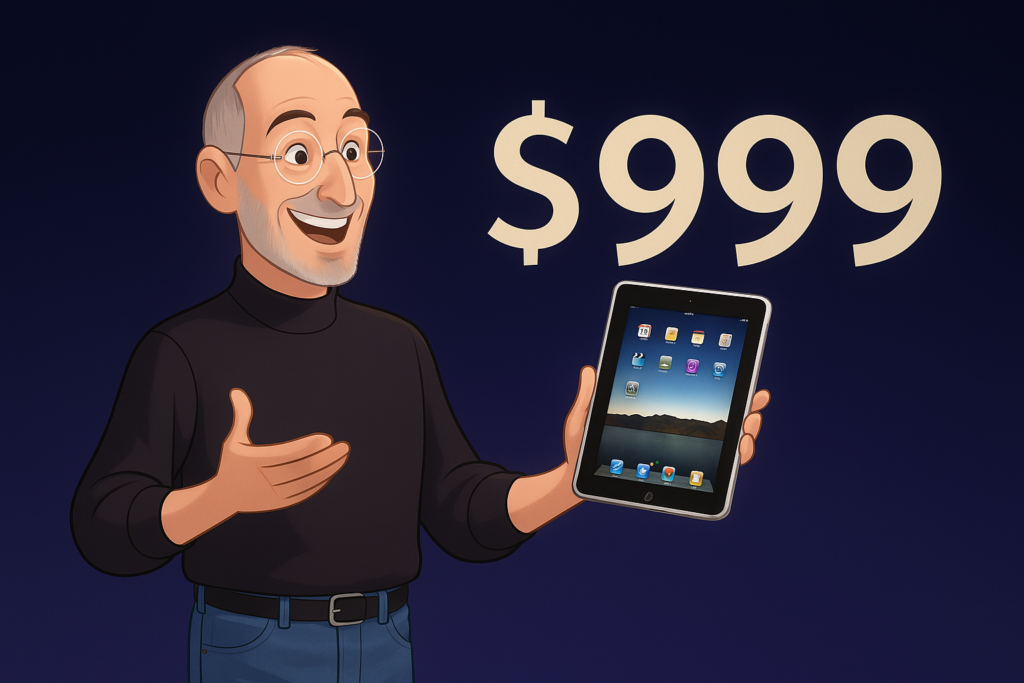
I’m starting a new email series today that explores a super-important aspect of product psychology: the hidden biases that prevent customers from buying products they would otherwise love.
All of these cognitive blind spots are real, proven barriers standing between your brilliant product and eager customers. Over the next few days, I’ll share research-backed strategies to help you recognize and overcome them.
Let’s start with perhaps the most financially consequential bias: Anchoring.
Anchoring is our brain’s tendency to rely too heavily on the first piece of information we encounter when making decisions.
That initial reference point — or “anchor” — disproportionately influences all subsequent judgments, even when it’s completely arbitrary.
The classic study on anchoring (published by Daniel Kahneman and Amos Tversky in 1974) asked participants if the percentage of African nations in the UN was higher or lower than a randomly spun wheel number (either 10% or 65%).
Participants who saw a high anchor guessed 45% on average, while those who saw a low anchor guessed an average of 25%.
What was clearly a completely random initial number skewed people’s estimates by 20 percentage points!
And Steve Jobs understood anchoring better than perhaps any product marketer in history.
When launching the original iPad, he said: “What should we price it at? Well, if you listen to the pundits, we’re going to price it at under $1000 — which is code for $999.”
He let that anchor sink in, a huge $999 occupying the screen behind him for nearly a full minute while he explained the value. (50 seconds by my count.)
Then, to great cheers, the number got smashed to bits by a new one: $499. What tremendous value! (Even though $499 was premium pricing at the time for a personal device.)
He reset the entire price perception. And it worked at scale.
In I Need That, I explain how customers overvalue what they already have by a factor of three, while innovators overvalue their improvements by the same factor.
Price anchoring is part of why this happens: customers get pre-anchored to their current solution’s value and it’s nearly impossible to shift that mental reference point.
Unless you know how to CREATE a new one.
Product Payoff: Peloton brilliantly leveraged anchoring by positioning its $2,495 bike against the experience of boutique cycling studios, not other exercise bikes. By emphasizing that comparable studio classes cost $34 each, Peloton established a mental anchor that made the bike (and its unprecedented experience) seem like a bargain at just 73 classes’ worth — a threshold many users would cross in less than a year. This anchoring strategy helped Peloton grow to nearly 3 million paid subscribers despite pricing far above typical home exercise equipment.
Action for today: Identify the existing anchors currently harming how prospects perceive your product’s value. Are they comparing your software to free alternatives? Your premium device to commodity versions? Once you’ve done this, deliberately create new, more favorable anchors through strategic comparisons, pricing presentations, or reframing the category entirely.
Tomorrow I’ll explore how Loss Aversion creates another powerful barrier to purchase.
What’s YOUR experience with price anchoring? Have you seen it work effectively — or backfire spectacularly? Tap that tempting little reply arrow and share your story.
I love when readers do, and always write back. Try me!
Or reach out anytime to my valued team of product marketing specialists at Graphos Product.
